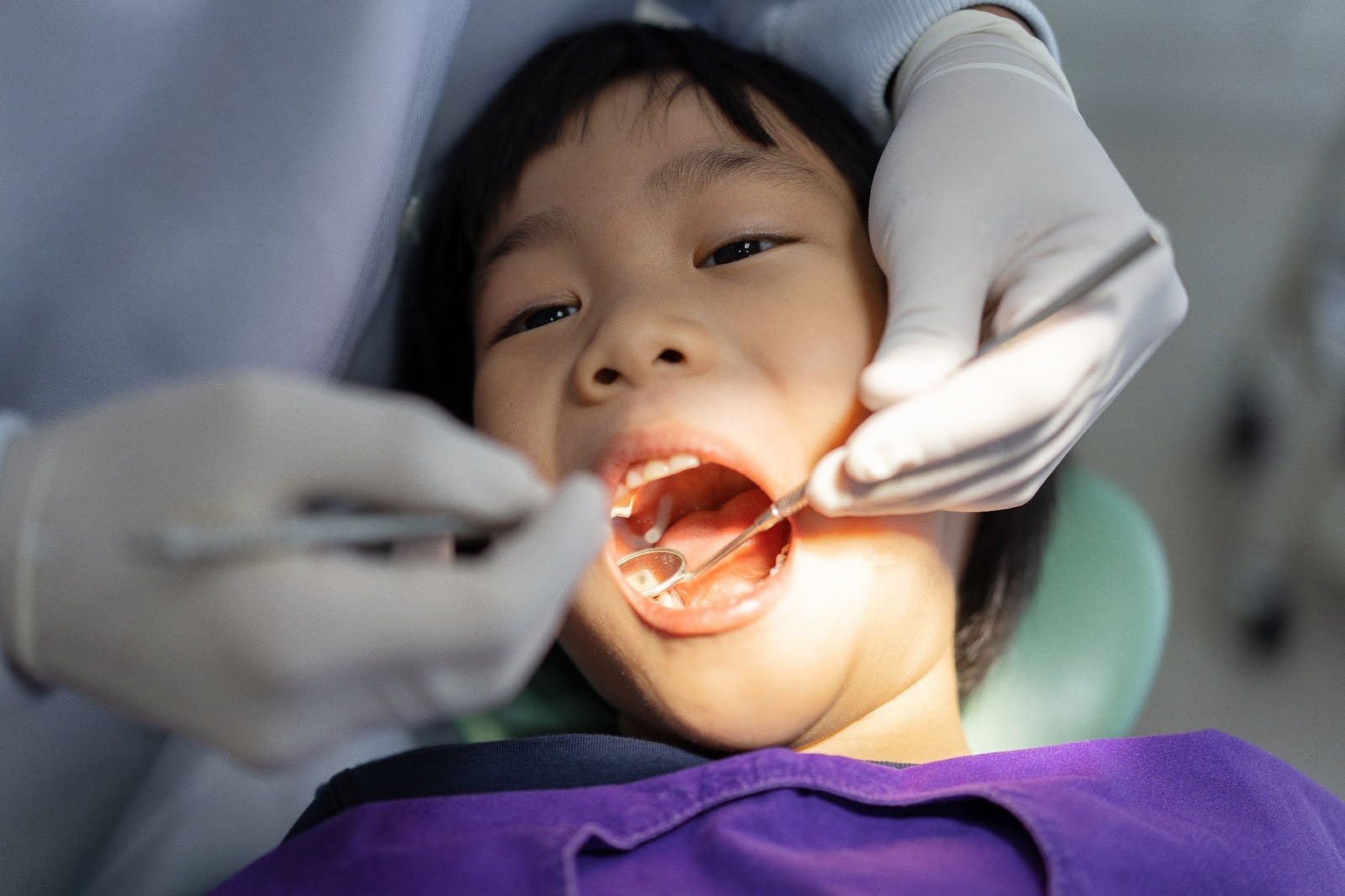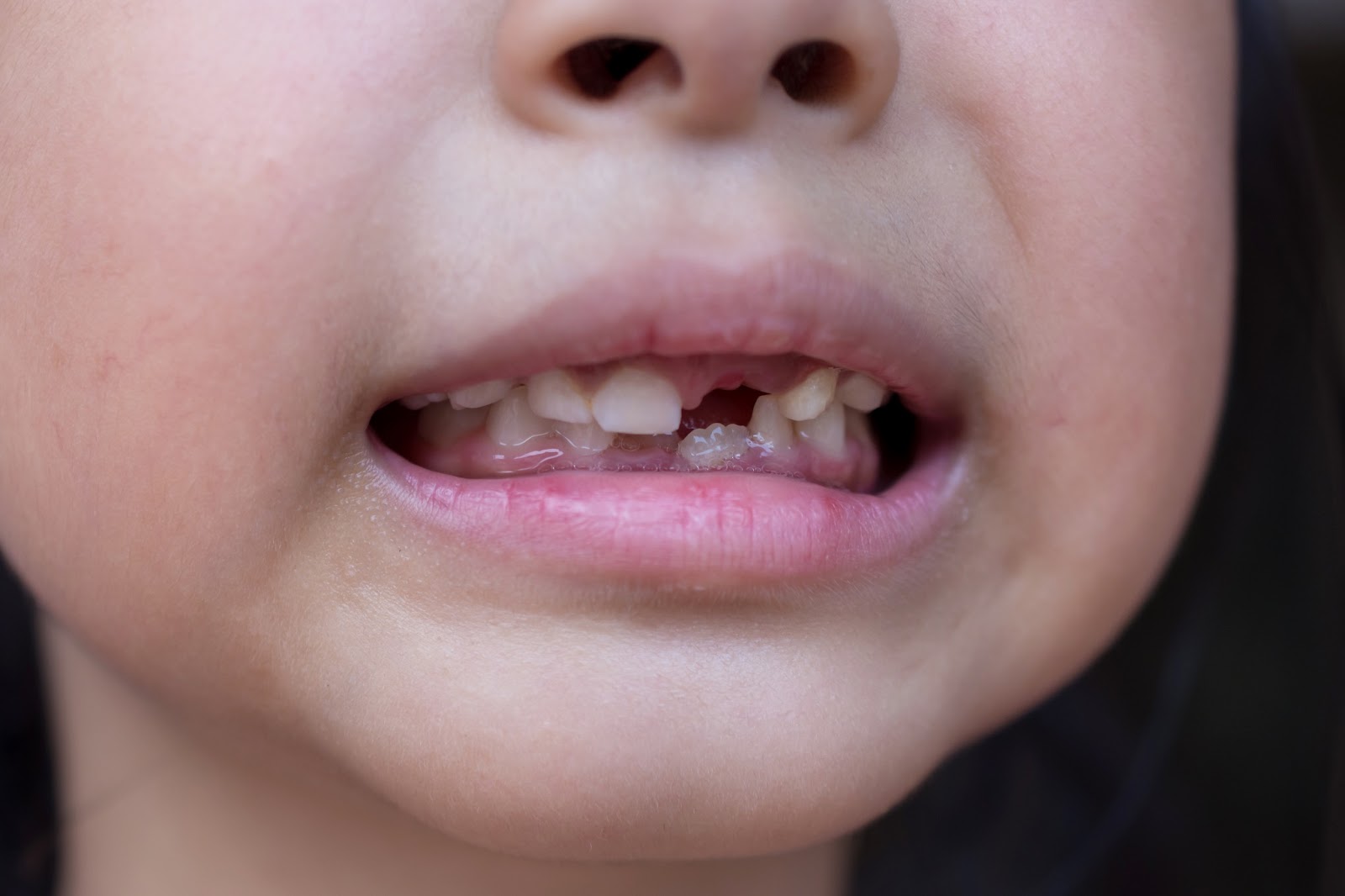Child orthodontics is a great form of early dental intervention. It allows us to catch misalignments, cavities and other issues before they become major problems.
While it is highly recommended to get your child checked before problems arise, it is not uncommon for children to show early signs of irregularities. Here are signs your child may need orthodontics much sooner rather than later:
What Is Child Orthodontics?
(Image Source: istockphoto.com)
Child orthodontics is a branch of dentistry that focuses on diagnosing and treating dental and jaw irregularities in children. Unlike adult orthodontics, which deals with correcting fully developed issues, pediatric orthodontics often start as early as 7 years old.
Child orthodontics includes a wide range of orthodontic appliances. Palatal expanders, space maintainers, early interceptive appliances and even clear aligners like Invisalign for children are commonly used.
The goal is to guide jaw growth, ensure proper spacing and prevent more serious issues later on.
Why Early Intervention Matters?
Interceptive orthodontics, also known as Phase 1 orthodontic treatment, can prevent minor concerns from turning into complex dental problems.
At the mixed dentition stage (when your child has both baby and adult teeth), orthodontists can detect early signs of malocclusion, crowded teeth or jaw misalignment. In fact, visiting the dentist no later than your child’s first birthday can set the stage for early detection.
With routine visits up until the age of 7, dentists can evaluate the growth of your child’s teeth and jaws with advanced tools. This includes X-ray diagnosis, cephalometric analysis and dental impressions.
Signs Your Child Needs Orthodontics
(Image Source: istockphoto.com)
Crooked Teeth: Crooked teeth are one of the easiest to spot. Any overlapping or twisting could also indicate limited mouth space or crowded teeth. This will worsen overtime, leading to hygiene issues and even gum diseases.
Braces for kids, clear aligners, braces or even space maintainers may be used to create room for permanent teeth to grow.
Overbite and Underbite: An overbite is when the upper front teeth extend too deep over the lower ones. Conversely, an underbite is when the lower teeth sit in front of the upper teeth.
Both are types of malocclusion and can affect your child’s ability to chew, speak and smile comfortably. If left untreated, these conditions can lead to jaw misalignment. Treatments might include functional appliances, headgear or early-stage braces.
Crossbite and Overbite: Teeth that do not line up properly could indicate crossbite or overbite. These issues can lead to abnormal teeth wear, jaw pain and asymmetrical facial growth. Palatal expanders or removable appliances can resolve these problems early on.
Speech Problems: Pay attention to your child’s speech pattern. Difficulty pronouncing words or persistent lisps may stem from dental misalignments. These issues can also be related to improper tongue positioning caused by thumb sucking or tongue thrust.
Mouth Breathing: Does your child breathe through their mouth more than their nose? Mouth breathing is often linked to a narrow upper jaw. This can also impact facial development, oral posture and even sleep quality.
Treatment includes jaw expansion, braces and aligners or even myofunctional therapy (non-orthodontic related).
Snoring or Sleep Apnea: Persistent snoring or obstructive sleep apnoea can point to a jaw development issue. This also relates back to mouth breathing and restricted airway caused by a narrow upper jaw.
Interceptive orthodontics can help widen the airway and improve breathing during sleep.
Premature or Delayed Tooth Loss: Children usually lose their baby teeth around the age of six. However, children who lose teeth earlier or later than usual may indicate issues. This includes teeth eruption, tight jaw spacing or permanent tooth alignment.
Premature tooth loss can cause nearby teeth to shift into the empty space. On the other hand, delayed tooth loss might indicate that the permanent teeth are impacted or erupting in the wrong position.
What to Expect During a Visit
Your child’s first dental visit can be daunting. Nonetheless, orthodontics today is designed to be gentle and child-friendly. With so many parents understanding the importance of early dental intervention, it was only a matter of time before child-focused dental care became the norm.
Today, professionals are more equipped than ever. They have the experience and expertise to handle most procedures—reassuring both parent and child.
To find out more about child orthodontics, please visit our website or contact us.








